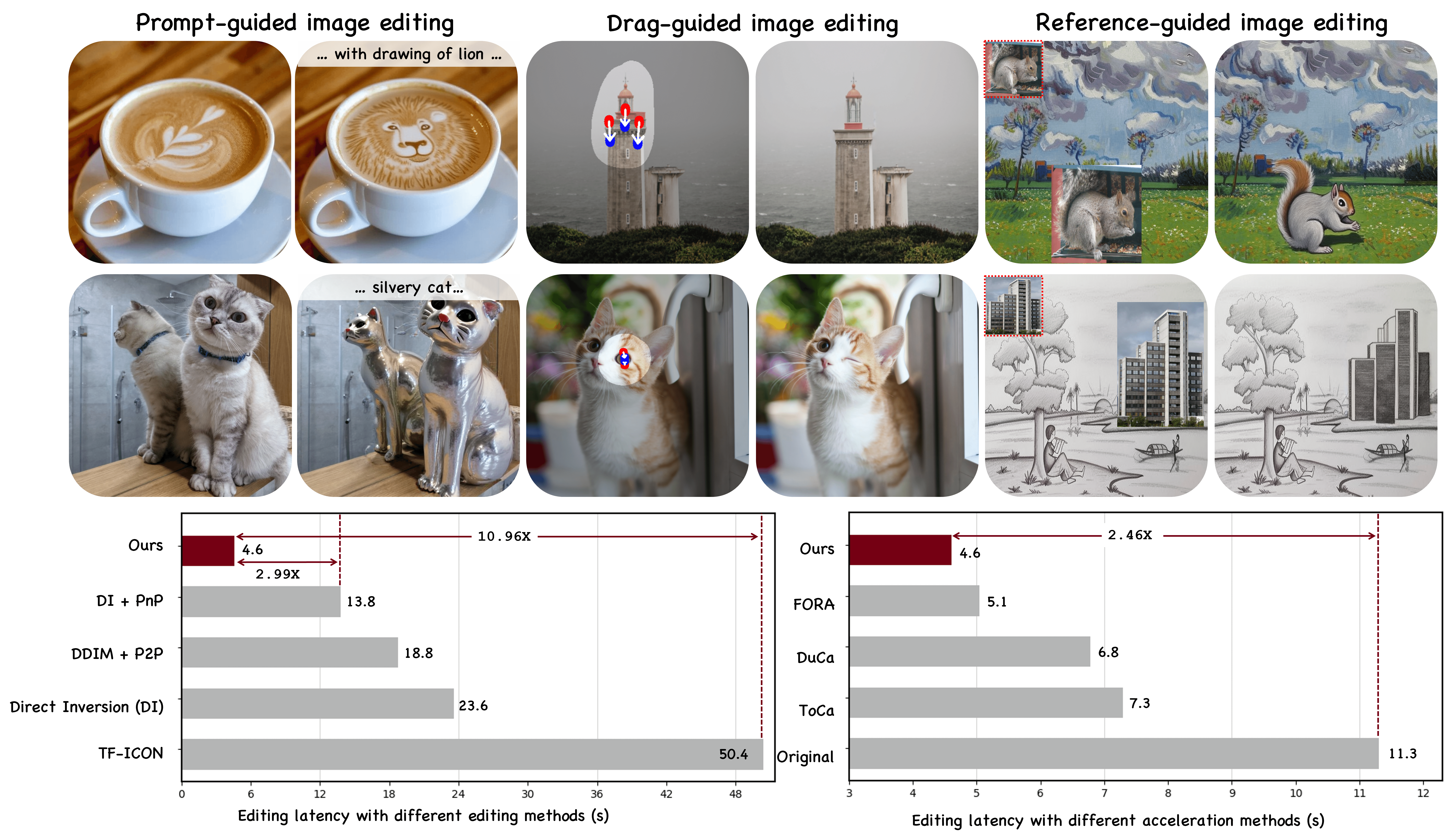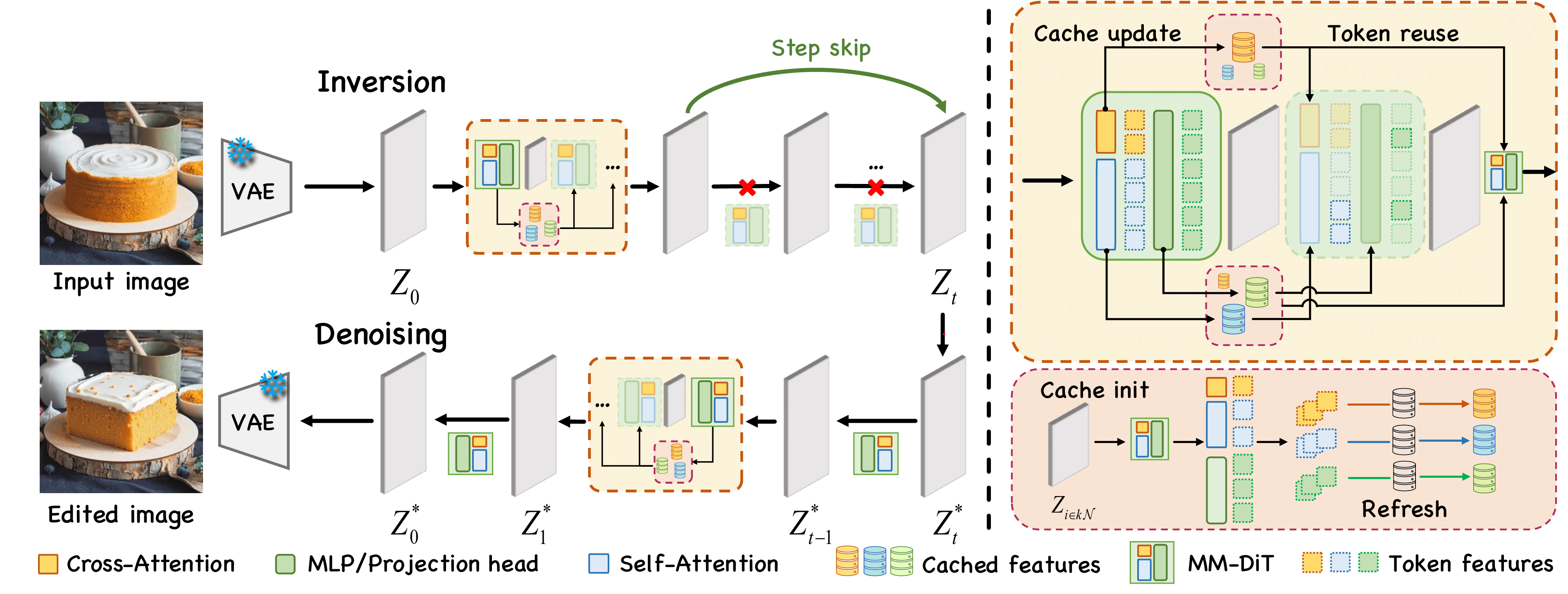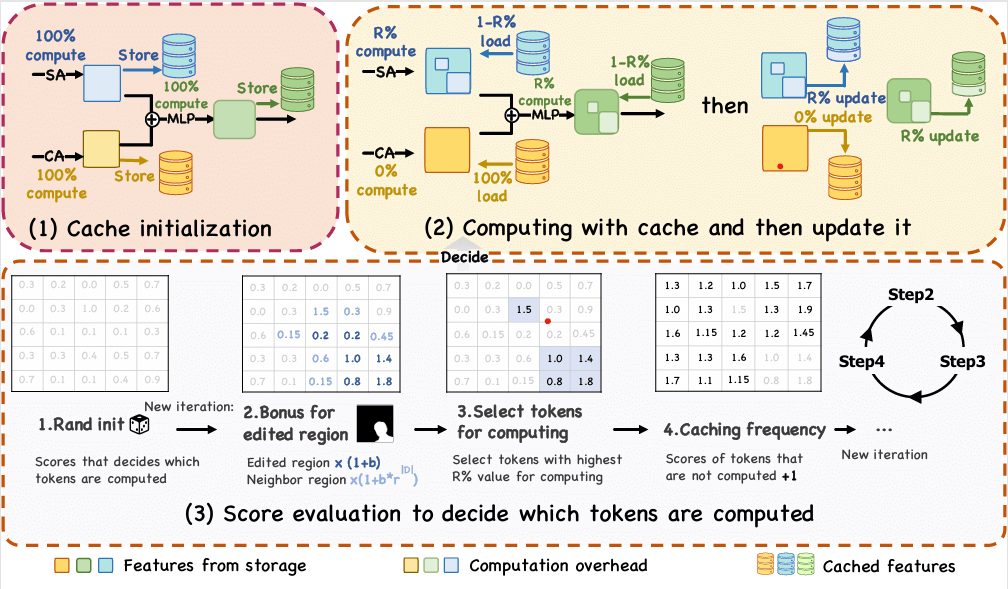
Inversion-based image editing is rapidly gaining momentum while suffering from significant computation overhead, hindering its application in real-time interactive scenarios. In this paper, we rethink that the redundancy in inversion-based image editing exists in both the spatial and temporal dimensions, such as the unnecessary computation in unedited regions and the redundancy in the inversion progress. To tackle these challenges, we propose a practical framework, named EEdit, to achieve efficient image editing. Specifically, we introduce three techniques to solve them one by one. For spatial redundancy, spatial locality caching is introduced to compute the edited region and its neighboring regions while skipping the unedited regions, and token indexing preprocessing is designed to further accelerate the caching. For temporal redundancy, inversion step skipping is proposed to reuse the latent for efficient editing. Our experiments demonstrate an average of 2.46X acceleration without performance drop in a wide range of editing tasks including prompt-guided image editing, dragging and image composition.






@misc{yan2025eeditrethinkingspatial,
title={EEdit : Rethinking the Spatial and Temporal Redundancy for Efficient Image Editing},
author={Zexuan Yan and Yue Ma and Chang Zou and Wenteng Chen and Qifeng Chen and Linfeng Zhang},
year={2025},
eprint={2503.10270},
archivePrefix={arXiv},
primaryClass={cs.CV},
url={https://arxiv.org/abs/2503.10270},
}